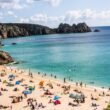A landscape featuring the unique natural features of iceland
The Best Things To Do For A First Timers Trip To Iceland
A landscape featuring the unique natural features of iceland
Editorial Note: Earth Curious contains affiliate links. If you make a purchase through these links, we will earn a commission at no extra cost to you. Thanks!






